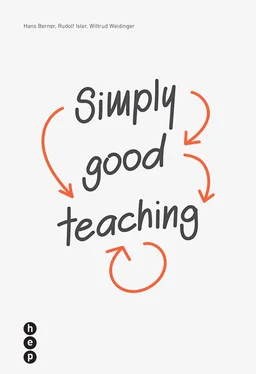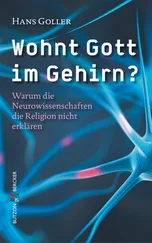Are self-determined and explorative forms of learning indeed so much better? We do not share this opinion and concur with the findings of the empirical education researcher Frank Lipowsky, who summarized his conclusion briefly and succinctly as follows: “Open learning situations per se are not superior nor inferior to traditional learning situations. The quality of instructions cannot be tied to its degree of openness and freedom of choice.”1
How is this book structured?
Simply good teaching provides suggestions about the most important characteristics of good teaching and presents various didactic approaches and specific teaching methods in a conceptional and practice-oriented manner – knowning that each teacher needs to develop a combination that suits the topic, the class, as well as themselves.
Following the introductory first chapter, the subsequent seven chapters are devoted to one concept or method, respectively. Considerations on assessment, planning, and reflection, which are useful for all didactic approaches and methodologies, conclude the suggestions of this handbook.
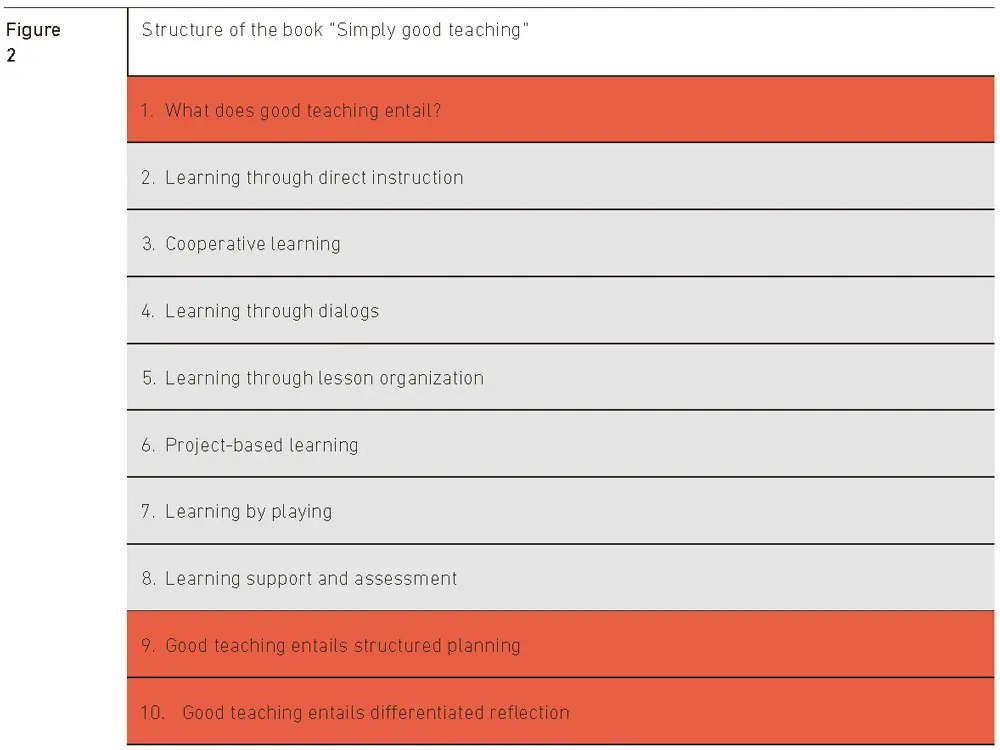
The first chapter presents the framework for the general characteristics of good teaching as they are known from common didactic and teaching research. References to the individual subsequent chapters thereby provide forward-looking textual points of reference to the various didactic concepts and teaching methods. The chapter sequence follows along the polarities of teacher-driven versus self-determined and instructional versus explorative learning and begins with direct instruction. The subsequent chapters increasingly loosen up the teacher-oriented dimension and proceed from cooperative learning in chapter three to dialog-based learning in chapter four, to various other student-oriented forms of instruction, such as working with weekly plans, workshop instruction, studio education, and main lesson blocks in chapter five. The highest form of student centeredness as well as explorative learning, learning with projects, appears in chapter six. Chapter seven, as the last pillar of the didactic concepts and teaching methods, presents learning through play, a form which may oscillate between teacher-oriented and student-oriented and between instructional and explorative, depending on the use and function of play. The framework which the introductory chapter opened is closed successively in the last chapters. Thus, chapter eight deals with the question of learning process assessment and assessment of student performance. Chapters nine and ten provide suggestions and possibilities for structured instructional planning along the presented concepts and methods, as well as a collection of possibilities for a differentiated reflection on and continued development of one’s own teaching.
How are the chapters structured?
All chapters are identically structured. As a reader, you are being prompted in the first part of every chapter captioned by “These are your tasks …” to deal with your own experiences in school and instructed to record your previous experiences and insights with learning (your subjective theories) and to discuss them with colleagues. In the subsequent prompt, “You must know this …”, you receive important information and learn about actual theoretical key points. In the prompt, “How to apply this …”, you will find out how to implement these theoretical insights into practice. The last part of every chapter provides concrete examples under the heading “practical exercises and examples”.
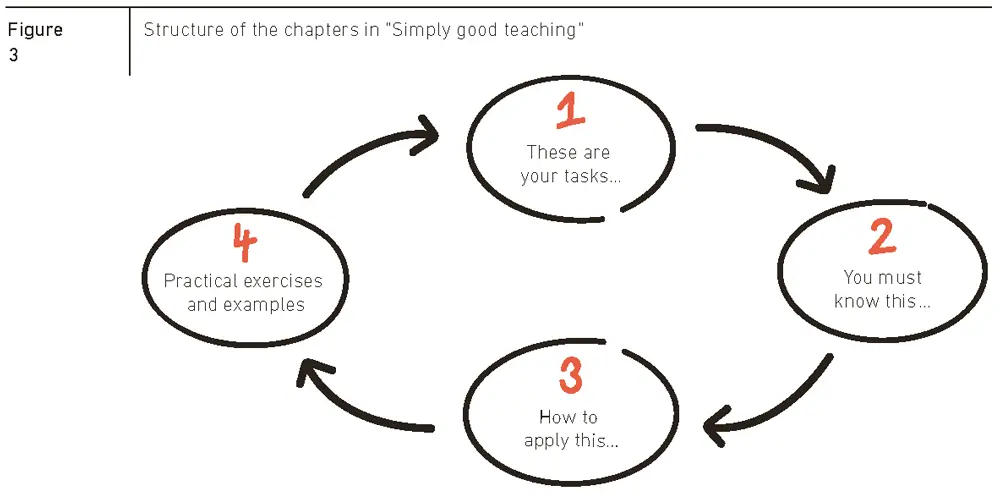
This procedure is similar to the didactic model of dialogic learning presented in the fourth chapter. Dialogic learning is a first step – on a singular level – a personal dialog with the material (1). The optic reads “I see it this way!”. The required activity is reflection. Subsequently, a dialog with the material is required on a regular level (3). The optic here reads: I acquire an overview and a perspective based on theoretical insights. The required activity is breakdown and structuring. Between these two phases lies a divergent phase , in which the personal viewpoint is complemented with those of others (2). This phase is related to the question “Aha, is this how you see it?” or the statement “This is how you see it!” Of importance, finally, is the connection of the regular phase with a new singular phase , a phase during which the first answers based on knowledge gain and increasing recognition are self-critically examined and questioned concerning their practical application possibilities (4).
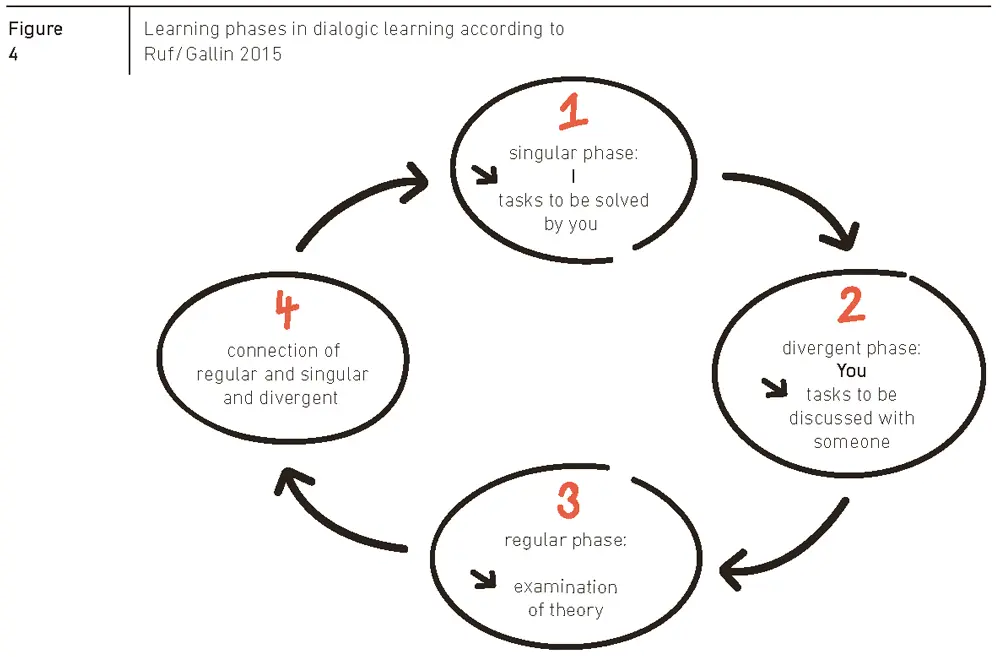
There is an important reason for the fact that every chapter begins with a critical examination of one’s own learning and teaching experiences, which transcends our dialogical learning-inspired understanding of learning. One of the big pitfalls of teacher training is that what is taught is not applied in practice in the schools. It is assumed that one of the main reasons for this discrepancy between quality aspirations and instructional reality is the fact that teachers do not teach as they were taught to teach, but like they were taught themselves or, according to Howard Altman: “Teachers teach as they were taught, not as they were taught to teach.”2 For teachers, the acquisition of expertise in educational methods is a long process in which learning by imitation appears to play a significant role. If the variety of teaching methods is not experienced by the students but only taught as an academic subject within the framework of teacher education, rather than experienced as a didactic-methodological reality, the independent realization of this demand – especially in the first year of a teacher’s professional work experience – may fall victim to excessive demands and overload, and may lead to resignation and retreat to the already experienced examples as a student. The overwhelming dominance of actual experiences threatens to be perpetuated. To break this cycle, we deem it of greatest importance to make us aware of our own experienced classroom teaching and to analyze it critically. Only this way can the preconditions be created for the still not easy process of gradually building a varied personal repertoire of methods.
What does it mean to teach well?
What do you say to this demand: “The first and last goal of our didactics shall be to discover and explore the teaching practice whereby teachers have to teach less, the students nevertheless learn more; and whereby there is less noise in the schools in favor of more freedom, pleasure and real progress.”3
This demand was published more than 350 years ago. It was written by the Czech theologian and educator Jan Amos Komensky, who under his Latin name Johann Amos Comenius achieved worldwide fame. In his Didactica magna (Great Didactic or Great Art of Teaching) published in 1657, he promises that the world’s entire body of knowledge can be taught to all of mankind completely and comprehensively. Comenius’ pointed criticism of the prevalent conditions of the schools and his proposals for improvement still fascinate today. Comenius criticized the lesson organization of his time with a scathing judgement (“It is a torment for young people to be smothered by dictations, exercises, memorization ad nauseam, even to the point of mental confusion”), the lesson content (“What is connected by Nature is not being treated together, but separately”) and the teachers (“The fool does not teach the children as much as they can comprehend, but as much as he can possibly stuff into the children”). In contrast, Comenius demanded that pupils’ readiness to learn be awakened and maintained, namely by renouncing coercion, through pleasant methods (such as parables, fables, mysteries, discussions), and through learning by doing rather than mechanically applied rules, and with the choice of attractive learning topics. Comenius demanded the attainment of vivid and sustained learning outcomes with activation of all senses, the connection of the senses with the intellect and through a coherent, connected treatment of things that belong together. He wanted to prevent excessive demand and learning difficulties by way of a natural allocation of teaching time and a natural beginning of the school year, the reduction and structuring of the subject load, through the path from the general to the particular, and through compact, uninterrupted learning.4
Читать дальше
